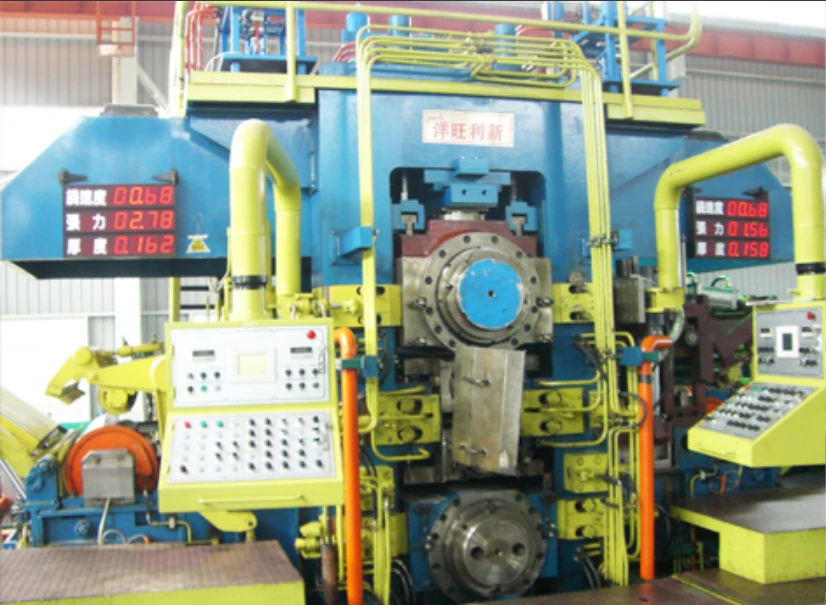
Temper Rolling Mill | Superior Flatness, Finish & Strength
Temper Rolling Mill: practical notes from the shop floor and the boardroom
If you work with cold-rolled strip, you know the finishing pass can make or break downstream performance. I’ve walked more lines than I can count, and, to be honest, the temper pass is where the magic happens—locking in flatness, toning down yield-point elongation, dialing surface roughness. A good Temper Rolling Mill is equal parts metallurgy and control engineering, with a dash of operator instinct.

What’s trending in temper mills (and why buyers care)
Three currents I keep hearing from plant managers: tighter flatness (≤ ≈8 I-units) for EV and appliance skins; deterministic Ra control (e.g., Ra ≈0.6–1.2 μm for paintability); and energy-smart soft reduction to gently tweak thickness while stabilizing mechanical properties. Surprisingly, many customers say real gains came from smarter AGC/AFC tuning rather than a hardware swap. Software eats steel, too.
Core functions (in plain English)
- Suppress yield-terrace and stabilize YPE—better deep draw behavior.
- Clean up the surface and set controlled roughness for coatings or lamination.
- Improve flatness/straightness for consistent coil geometry.
- Soft reduction to nudge thickness and fine-tune mechanical properties.
Typical technical specs
| Parameter | Typical Range (≈) | Notes (real-world use may vary) |
|---|---|---|
| Strip width | 600–1,850 mm | Dependent on stand and payoff/tension reels |
| Thickness | 0.2–3.0 mm | Soft reduction up to ≈1–2% |
| Entry speed | 200–1,200 m/min | High-speed lines need robust AFC |
| Roughness (Ra) | 0.4–1.8 μm | Per ISO 4287/4288; shot/blasted roll textures |
| Flatness | ≤ 8–12 I-units | Feedback from coil maps + laser shape meters |
Process flow, materials, and testing
Materials: low-carbon CR, IF steels, tinplate base, some ferritic stainless; occasional Al coils (with adjusted rolls). Methods: entry inspection → cleaning/brush → lubrication → temper stand (2-/4-high) with AGC/AFC → electrostatic oiler or chem coater → exit inspection. Testing: tensile per ISO 6892-1/ASTM A370, surface per ISO 4287, deep draw per EN 10130, coating adhesion per ASTM D3359. Service life: work rolls ≈ 8,000–15,000 t per grind; bearings typically 3–5 years with proper lube.
Where it earns its keep
- Automotive skins and EV battery casings (flatness and paintability).
- Appliance panels—customers often report fewer orange-peel defects.
- Packaging steel (tinplate base)—tight gauge and smooth surfaces.
- Construction profiles and PPGI lines—consistent Ra improves coating gloss.
Vendor snapshot (informal comparison)
| Vendor | Config | Automation | Lead Time | Certs |
|---|---|---|---|---|
| YWLX (Beijing) | 2-/4-high, soft reduction | AGC/AFC, coil map, MES hooks | ≈ 5–8 months | ISO 9001 (typ.) |
| SMS group | High-speed temper lines | Advanced model predictive | ≈ 8–12 months | ISO/CE |
| Primetals/Danieli | Integrated finishing lines | Level 2/3 integration | ≈ 9–14 months | ISO/CE |
Customization checklist
- Roll texture library (electro-discharge, shot, hybrid) for target Ra/Rz.
- AGC/AFC tuning for thin gauges; add shape meter and bend/crown control.
- Coil logistics: quick-threading, automatic tail stitching, camera QC.
- Energy package: regenerative drives, smart lubrication.
Quick case note
An Asia-Pacific appliance producer upgraded to a Temper Rolling Mill with soft reduction and tighter AFC. Over 90 days, paint rejects dropped ≈32%, flatness improved to ≤10 I-units on 0.5–0.8 mm coils, and line speed rose by ~12%. Their maintenance chief told me, “Honestly, tuning beat hardware. Once the coil map was dialed in, the line behaved.”
Compliance, testing, and documentation
Look for ISO 9001 and CE marking; verify mill test certificates with tensile per ISO 6892-1/ASTM A370, surface per ISO 4287/4288, and DC grades per EN 10130. For traceability, ask for Level-2 data trails and coil genealogy.
Origin: No.1518, LAR Valley Int'l, Guang’anmen Avenue, Xicheng District, Beijing, 100055
Authoritative references
- ISO 6892-1: Metallic materials — Tensile testing, Method A.
- ASTM A370: Standard Test Methods and Definitions for Mechanical Testing of Steel Products.
- ISO 4287/4288: Geometrical product specifications — Surface texture profile methods.
- EN 10130: DC cold-rolled low-carbon steel flat products for cold forming.
- AIST (Association for Iron & Steel Technology) Temper Mill & Flatness Best Practices.
-
YWLX’s 1450mm Six-Hi Reversing Mill Goes Live in BangladeshNewsNov.24,2025
-
Adjusting Roll Gap in 6Hi Reversing Cold Rolling Mill for Thin StripNewsNov.13,2025
-
Quality Control Standards for Automatic Gauge Control in Strip RollingNewsNov.13,2025
-
Effect of Skin Pass Rolling on Metal DuctilityNewsNov.13,2025
-
Key Components of a Modern TempermillNewsNov.13,2025
-
Common Wear Patterns of Work Roll in Tandem Cold Mill OperationsNewsNov.13,2025
-
Revolutionary Skin Pass Rolling Technology for Enhanced Steel QualityNewsNov.04,2025










